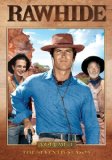| Reviews & Columns |
|
Reviews DVD TV on DVD Blu-ray 4K UHD International DVDs In Theaters Reviews by Studio Video Games Features Collector Series DVDs Easter Egg Database Interviews DVD Talk Radio Feature Articles Columns Anime Talk DVD Savant Horror DVDs The M.O.D. Squad Art House HD Talk Silent DVD
|
DVD Talk Forum |
|
|
| Resources |
|
DVD Price Search Customer Service #'s RCE Info Links |
|
Columns
|
|
|
Rawhide: The Seventh Season, Volume 1
Reviewer's note: CBS DVD and Paramount have released Rawhide's seventh season in two separate volumes (you can read my Volume 2 review at the link). Since I received these volumes separately, I'll review them as such, with a shared overall take on this penultimate--and schizophrenic--season, and episode reviews specific to each volume.
The cattle drive's rather startling excursion into dark, arty territory is eventually detoured into far more conventional terrain. CBS DVD and Paramount have released Rawhide: The Seventh Season, Volume 1, a four-disc, 15-episode collection that represents the long-running CBS Western's first half of its 1964-1965 season. Starring Eric Fleming (his last season on the series before he was unceremoniously canned), Clint Eastwood, Paul Brinegar, James Murdock, Steve Raines, Rocky Shahan (and in volume two, Sheb Wooley and Robert Cabal), Rawhide by this stage of the game was floundering badly in the ratings, the victim of too much format tinkering and just plain repetition. A bold move this season to save the show, courtesy of two new producers, jolts the oater to attention and results in some terrific, series-best episodes...but it was for naught in terms of ratings, with the format unfortunately yanked back onto safe, humdrum ground before the season concluded. A real shame. No extras for these super-sharp fullscreen black and white transfers.
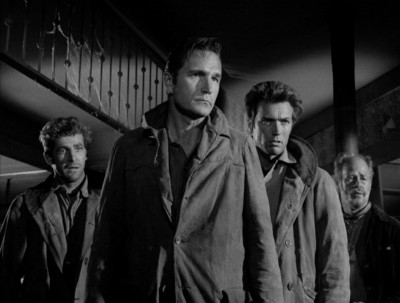
North Texas, a few years after the War Between the States. Sometimes patient, sometimes understanding, but mostly pissed-off and always driving, driving, tough-as-nails trail boss Gil Favor (Eric Fleming), has 3,000 head of cattle to get to Sedalia, Missouri, and he hasn't got time to screw around with drovers who can't cut it out on the newer Chisum trail. High-spirited, handsome "ramrod," Rowdy Yates (Clint Eastwood), is second-in-command; always grumbling, comical G.W. Wishbone (Paul Brinegar), is the chuck wagon cook; stalwart rough riders Jim Quince and Joe Scarlett (Steve Raines and Rocky Shahan) are drovers for the run; and poor, dim-witted "Mushy" Mushgrove (James Murdock), the young, not too bright kid of the group, helps out Wishbone with the cooking and cleaning and doctoring. Fighting the elements every step of their journey, including bad grassland, storms, mountainous passages and killing heat and drought, Gil's team encounter obstacles not just from nature, but from the human landscape, as well, as they deal with the problems of the people they encounter out on the trail.
I've written numerous times about Rawhide over the last seven (!) years, with the last time I had a complete season to watch and review being season two (as opposed to the usual frustrating Rawhide situation for me, where parts of seasons or whole years inexplicably bypass us here at DVDTalk). Good thing I had both volumes of season seven this time, because its chaotic shift in tone over these 30 episodes would have been difficult to properly assess had one or the other volume failed to show up. Dedicated fans of Rawhide know that the series had an increasingly troubled production as it wore on from 1959 to 1966 (six full seasons, with half-seasons opening and closing the show), with seemingly endless fiddlings with the format, producers, and cast doing nothing to keep Rawhide from its continual fall in the ratings after its third season high-point of 8th in the Nielsen's. Those first three years were shepherded by the series' creator, Charles Marquis Warren, a gifted producer and writer who also initially guided arguably television's greatest Western series, Gunsmoke. When Warren left Rawhide, producers Endre Bohem and Vincent M. Fennelly were brought in for subsequent seasons, neither of whom could staunch Rawhide' ratings' bleed (prior to this seventh season, Rawhide had finally dropped out of the coveted Nielsen Top Thirty during the 1963-1964 television year).
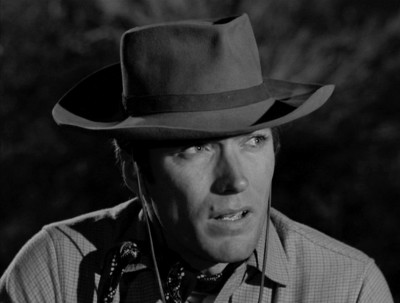
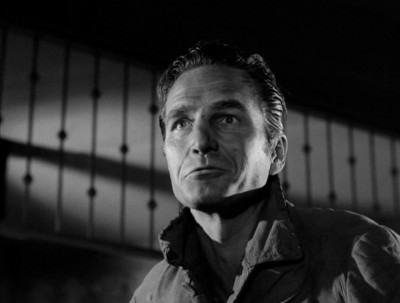
For this seventh season, producer/director Bernard L. Kowalski (Night of the Blood Beast, Krakatoa: East of Java, Macho Callahan, the wonderful exploiter, Sssssss) and writer/producer Bruce Geller (Zane Grey Theater, Have Gun, Will Travel, The Rifleman, as well as creating Mission: Impossible, and directing the fine Harry in Your Pocket) were brought on board, resulting in an immediate change in Rawhide's look and feel--a self-consciously dark, ominous, even "arty" quality, if you will, to the visuals that generally matched these episodes' more psychologically intense approach. In television or movie production, anytime you're attempting anything more complicated with the camera and the lighting than just plunking them down and shooting everything square in the middle of the frame, it's going to take more time to achieve what you're aiming for...and more production time invariably means more money spent. So it's not surprising that CBS, looking at Rawhide's still-hemorrhaging viewer numbers, would pull the plug on Kowalski and Geller before this seventh season even ended, bringing plodding Endre Bohem back as producer for the remaining nine episodes (these Bohem episodes appear in volume 2 of this seventh season of Rawhide, along with the remaining K & G leftovers that were aired out of production order). From an aesthetic viewpoint, Bohem's episodes are like night and day compared to K & G's episodes: relatively flat, A-B-C lighting, directing, and editing, with an unmistakably (and not flattering by comparison) old-fashioned look and feel to them that comes into even starker contrast when seen next to the flashy, intriguing, more visually and thematically complex K & G efforts. Bohem brings back Sheb Wooley and Robert Cabal to further convince viewers this is the old Rawhide again...but clearly this shift is a step backwards for the series, and yet one more stylistic change that must have thoroughly confused the show's remaining viewers--viewers who by 1964 were increasingly tuning into sitcoms rather than the dwindling number of network oaters.
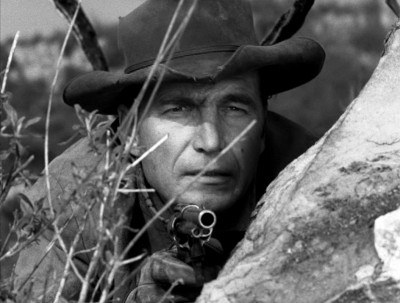
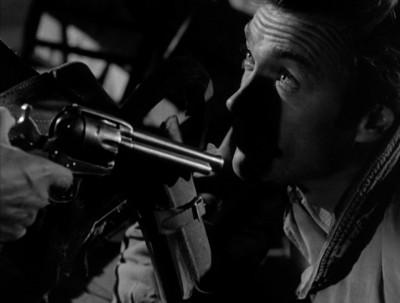
The season opener, The Race, scripted by Robert Levin and directed by Bernard McEveety, has an intriguingly modern, laid-back, sardonically bemused tone to what should have been just a straightforward, tense actioner: Rowdy is fed up with Gil's unbending ways, so he branches off as trail boss for a competing herd, racing Gil against the clock to get his cows in first. You can tell Eastwood hated doing the last scene, where Rowdy asks for his job back; he's having much more fun trading snotty come-backs on equal footing with an enjoyably energized Eric Fleming. It's important to remember that while Eastwood was shooting this season, he no doubt had one eye on the international box office, where his little spaghetti Western, A Fistful of Dollars, shot the year before after quite a few other stars turned it down--including co-star Eric Fleming--was breaking box office records in Italy that fall. It would take another year and a half for Fistful to finally become a hit in America, but you can already see Eastwood's growing confidence on-camera this season...and his growing irritation/boredom with Rowdy Yates and Rawhide. Psychology matched to the action in this fine outing, with an equally impressive supporting cast, including Warren Oates and L.Q. Jones. Series producer Bernard L. Kowalski helms scripter Sam Ross' The Enormous Fist, turning in a far more somber episode than the previous one, where Gil accidentally kills a desperate Lee Van Cleef (...and frankly, doesn't seem too concerned about it) before he starts to enjoy taking care of the man's family...including young widow, Brenda Scott. Kowalski orchestrates some fairly dynamic shots, compared to how things have looked for the last few seasons on Rawhide (that opener of Fleming walking down the town's boardwalk; the trucking shots of the poor in the shanty town), while Fleming gets Gil's increasing uneasiness with his new responsibilities just right. Piney, directed by Philip Leacock, is another indication of this season's shift to out-and-out anthology fare, with a story that really has little to do with Rawhide's central cattle drive storyline, or its characters: Ed Begley, his cattle empire ruined by disease and then the banks, orchestrates a comeback via a cleverly-disguised tunnel operation to a nearby bank he's going to rob. Smartly designed by Leacock (those shots of claustrophobic, terrified Begley--sensational as always--staring into the hole are eerie), and put over quite nicely by the expert cast, which includes J.D. Cannon, Lee Van Cleef, Tom Reese, Robert Karnes, and Elisha Cook, Jr.
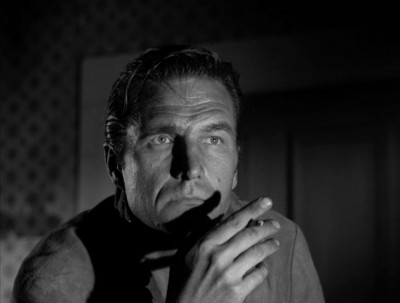
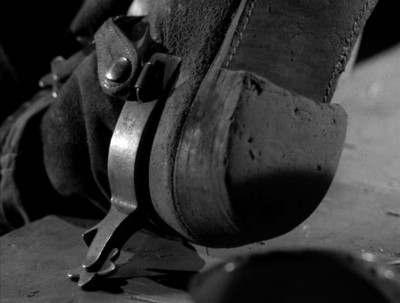
Not only one of the season's best but the series, too, The Lost Herd has a strange, deadly-serious vibe to it that's mesmerizing as scripter Archie Tegland and director Vincent McEveety deliver what has to be Gil Favor's lowest point in the show: he's lost an entire herd, and nobody, including Rowdy, is willing to back him up. The flat-out brilliant framing and lighting here look like something out of the best John Ford movie you never saw (I can't think of a big screen black and white feature from 1964 that looked as good as The Lost Herd, let alone anything else on TV at the time). Fleming turns in a remarkably accomplished performance--at times resigned, infuriated, stumped as to how to proceed, and yet still confident in his own actions--one that's better than anything I saw him do prior to this one (now all-but-forgotten Fleming getting shunted aside in favor of Eastwood's arguably less memorable contributions to Rawhide, is one of the more unjust happenstances in television history). Good, tough, unsentimental support in this one from the likes of Harry Townes, Royal Dano, and snake-eyed bastard Leo Gordon. On the other hand, I can't say if I've ever thought too much about James Murdock's contribution to Rawhide; his Mushy character has always been marginal at best (if Eastwood famously felt that the Rowdy character was dumb...what must Murdock have thought about what was given to him). However, you have to give credit to him, as well as to scripter John Mantley and helmer Michael O'Herlihy, for A Man Called Mushy, a surprisingly effective outing filled out on the edges with funny throwaways (a drunk Yo Yo, played by Paul Comi, on his mule), around a central performance by Murdock that's unexpectedly touching (I don't know if it's skill or just a blankness that works here, but Murdock's strange, unblinking "otherness" helps create these simultaneously funny/sad moments that take you by surprise). Another good example of how Geller and Kowalski helped deliver something outside our expectations this season. Bizarrely, what I expected to be one of the season's best offerings, after seeing the talent behind Canliss, turned out to be one of the least effective episodes this time around. Scripted by big-timer Stirling Silliphant (Route 66 and The Naked City), directed by old pro Jack Arnold, and starring no less than Dean Martin himself (Dino loved Westerns, true...but someone had to have paid him a ton to appear in this obvious effort to boost Rawhide's publicity and ratings), Canliss works out to be a thoroughly familiar, distressingly pretentious story of a gunslinger trying to outrun his reputation (and as most of the "anthology" offerings here, it has nothing, really, to do with the cattle drive or our regular characters). One or two good bits here (Silliphant's minute details of how a gunslinger evaluates shadows and wind velocity and even the color of the clothes he wears to stay alive, is pretty cool), but I felt sorry for a distracted, past-it Dino, who couldn't pull off the finale's abject humiliation (awful hambone Theodore Bikel is no better here, but Michael Ansara and true legend Ramon Navarro do quite well, despite what they're given). A big misfire.
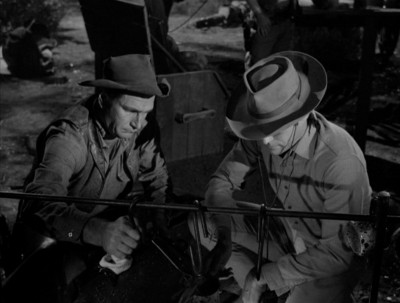
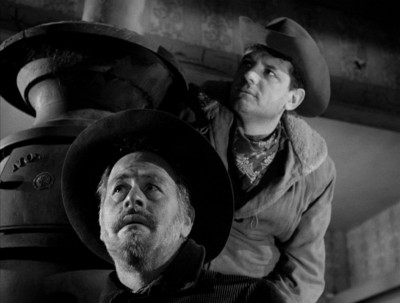
Much improved is the two-parter, Damon's Road, scripted by Richard Carr and Robert Levin, and directed by Michael O'Herlihy. One of the funnier Rawhides I've seen, this elaborate, elongated con job outing, complete with numerous double and triple crosses, offers a tour de force for familiar face Fritz Weaver, who shows here what a charming anti-hero he could be, before he was eventually typecast in all those slightly supercilious, weakling villain roles. A more-than-agreeably cynical undercurrent flows beneath this story about a railroad promoter screwing everyone in sight to get his tracks laid, while full, lush co-star Barbara Eden (I feel faint...) gives as good as Weaver does here--another underrated performer who should have exploited her harder, sardonic side more (the ending is flat-out hilarious when Fleming--having fun here playing broad--has to lead a charge barefoot, before fighting quietly with Weaver, lest they spook the soon-to-stampede cattle). You can't help but think of The Man With No Name when you see The Backshooter, a tense, suspenseful episode from scripter Richard Carr and helmer Herschel Daugherty. Much like Leone's anti-hero, Rowdy finds himself caught between two factions in a town that wouldn't mind seeing him dead, with Eastwood's tough, pissed-off performance putting this one over (here you can really see the soon-to-be iconic "expressionless killer Eastwood" persona in action). Good support from Slim Pickens as an opportunistic, unethical sheriff. It would be a stretch, at best, to somehow connect up Corporal Dasovik with Vietnam at this point on 1964 network television...but certainly in hindsight this beautifully-conflicted "calvary fort beseiged by Indians" outing feels like it has something to say along those lines (it made me keep thinking of Robert Aldrich's similarly-constructed Vietnam cavalry Western, Ulzana's Raid). I don't know if I've ever read a good review of one of John Drew Barrymore's performances...but he's terrific here as a proto-hippie conscript who confesses not hatred for the Indians that want to kill him, but absolute disinterest; he doesn't even understand the treaty that's been signed. Nick Adams has never been an actor I've cottoned to, but aside from a few overly-broad moments here, he's quite effective as the unlikely corporal put in charge of a unit that has zero respect for his authority. Some fascinating elements in Lionel Siegel's script (the Indian chief everyone is risking their life to save, in order to honor the treaty the soldiers don't understand, has ironically been appointed to his rank as a symbol of the other Indians' disgust with the treaty: as a brave, this "chief" never won a single engagement with the Whites). Bernard Kowalski directs with a sure hand; another series' best.
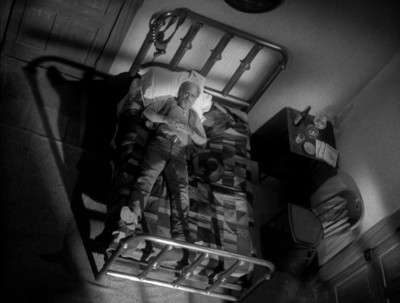
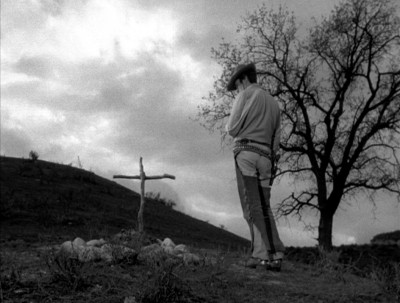
Eddie Albert, always good at playing obsessive, driven (or flat-out crazy) characters, shines in The Photographer, scripted by Clyde Ware and directed by Vincent McEveety. Beginning on a humorous note, The Photographer achieves a level of tension and surprising pathos as Albert's truth-seeking photographer foolishly scams his way into a bank robbing gang's confidence...only to discover that "the truth" as a concept may be just as elusive as "beauty" and "art" (Eastwood plays well off the energetic Albert). Unfortunately, No Dogs or Drovers doesn't know whether to play it straight or for laughs (nor does it seem to have the higher capacity to manage both), coming up as a middling affair, despite the amusing set-up of the rovers, in town for some R & R, getting suspicious that Gil and Rowdy are putting on airs. Much, much better is the wonderfully cold, contemptuous The Meeting, from Robert Lewin and director Michael O'Herlihy. When a non-plussed Gil is shanghaied into a fantastical plot to take over the entire cattle industry in the U.S. of A., masterminded by none other than Captain Stubbing himself, Gavin MacLeod, the plot machinations begin in earnest, with Eric Fleming yet again proving to be adept at adopting a lightly scoffing, skeptical tone as his Gil Favor just sits back and watches what's what, lest he get his head unnecessarily blown off (when Don Quine's smart, cool killer wraps up the foolhardy plan and amusingly lays this one on Gil as he happily takes blood money--"If I was the good-hearted outlaw that you read about in the newspapers, why I'd probably leave the gold with you for [the dead man's] wife and child...but I'm not. I'm heartless," Gil isn't outraged. He smiles, too). A beautifully contemptuous outing, and again, a series' best.
Certainly the height of Geller's and Kowalski's efforts to drag Rawhide into art house territory, scripter Cliff Gould's The Book is a wonderfully expressionistic outing (scintillatingly directed by Kowalski), that finds Rowdy hanging out at a nightmarish, set-bound carnival where he's inexorably drawn into a fast-draw contest by amoral hustler, Pat Hingle. Everything the previous pretentious Canliss wasn't, The Book looks like something out of 1920s UFA, with Kowalski shooting these baroque angles and grotesque inserts (Timothy Carey attacking a caramel apple has got to be seen to be believed...) as gunslinger J.D. Cannon bemusedly discusses all the men he's killed, and poor Rowdy slowly wakes up to the horror in which he's become involved. When Kowalski ends everything with a high, pitiless crane shot of men moving in on a down-on-his-knees Hingle, as Rowdy rips out pages of his precious "book," you know you've seen something that didn't come around too often on network television back in 1965--and certainly not too often in a so-called "family" Western like Rawhide. A remarkable episode. Finally (at least for this first volume), Robert E. Thompson's Josh is a solid entry, giving Albert Dekker a chance to play an old, washed-up drover who refuses to let go of his pride, even though he simply can't cut it anymore out on the drive. Dekker is quite touching here (his scene with the equally good Jay C. Flippen, as a deluded old acquaintance who can't bear to hear the truth, is a highlight), while Thompson has a couple of nice dialogue scenes where the concepts of pride and youth are put in their proper place (here's a hint: they just blow away).
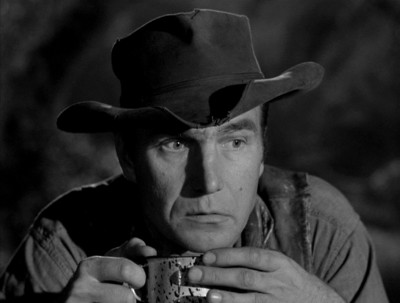
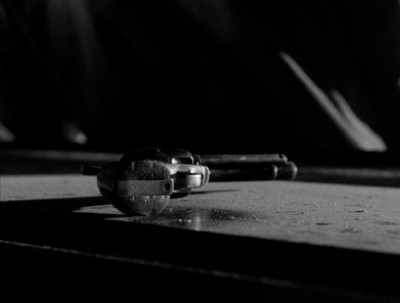
The Video:
As is usually the case with these Rawhide releases, the fullscreen, 1.37:1 black and white transfers for Rawhide: The Seventh Season, Volume 1 look quite sharp, with solid blacks, reasonable contrast (sometimes a tad hot in spots), and few screen imperfections. Not bad at all.
The Audio:
The Dolby Digital English mono audio track is serviceable, with low hiss and no subtitles or closed-captions available.
The Extras:
No extras for Rawhide: The Seventh Season, Volume 1.
Final Thoughts:
A missed opportunity. When CBS and the big wigs behind Rawhide decided to cut producers Bruce Geller and Bernard L. Kowalski before the season was even out, they only discombobulated the viewers once again when G & K's psychological, visually arty aesthetic was replaced by Endre Bohem's flat, boring, by-this-point-outdated representational style. Too bad; if they could have hung in there, Geller and Kowalski might have rode a new, stylistically hip Rawhide right into all that upcoming Leone/Eastwood/Man With No Name frenzy. I'm highly, highly recommending Rawhide: The Seventh Season, Volume 1 (...and don't forget that volume 2 has more G & K efforts).
Paul Mavis is an internationally published movie and television historian, a member of the Online Film Critics Society, and the author of The Espionage Filmography.


|
| Popular Reviews |
| Sponsored Links |
|
|
| Sponsored Links |
|
|
| Release List | Reviews | Shop | Newsletter | Forum | DVD Giveaways | Blu-Ray | Advertise |
|
Copyright 2024 DVDTalk.com All Rights Reserved. Legal Info, Privacy Policy, Terms of Use,
Manage Preferences,
Your Privacy Choices | |||||||









